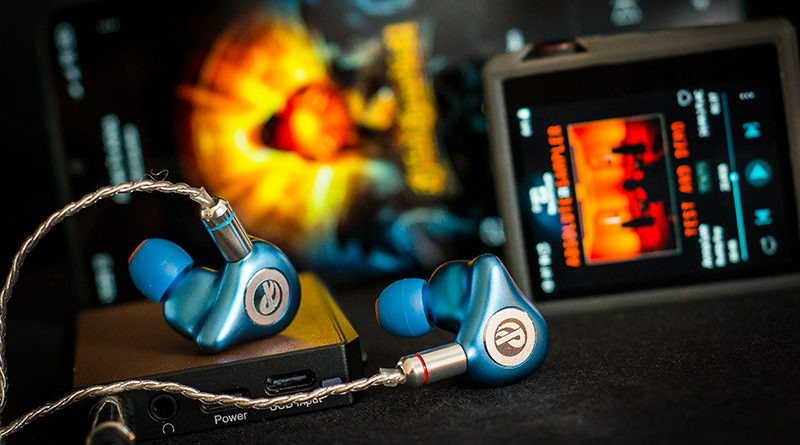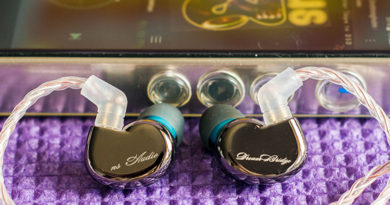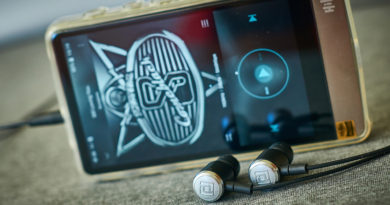Dethonray Tender 1 IEMs – planar magnetic endgame
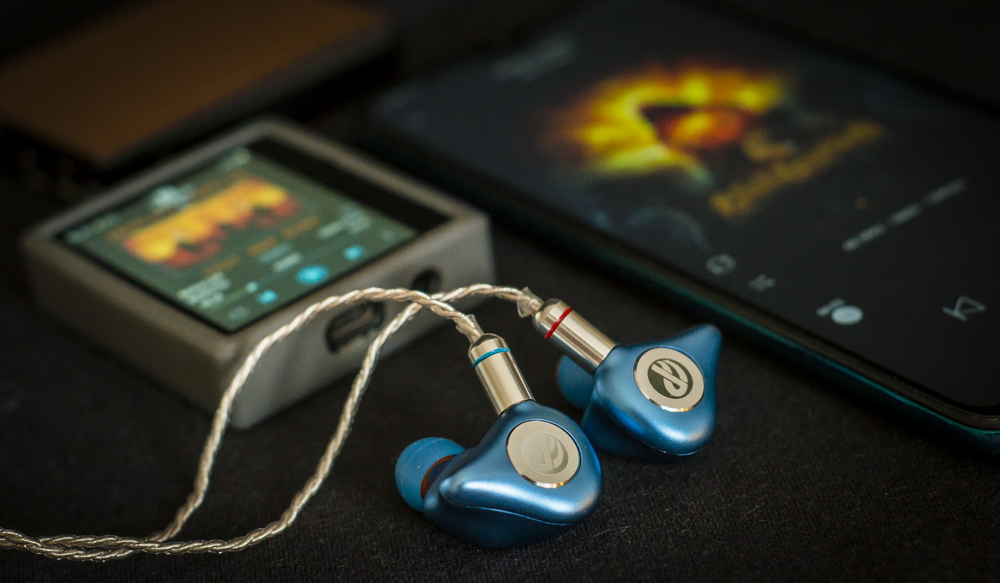
Important notice: read only in case if you are bored of recent market trends and heavily V-shaped tuning IEMs with only slight deviations that have conquered the market, if you believe that you already have developed audio tastes & habits, if you strive for relaxed enjoyment of music instead of punchy bites of sounds on the go, if you grown up and want to listen, hear and discover the tiniest details and feel the deepest emotions in each favorite track… All that notions made us uncomfortable with the existing IEMs, forced to search further and finally brought us to the following product, technology and conclusions we have made about it in this review 🙂

Dethonray, what is this brand? Let us try to describe it with our own understanding and analysis after few years of observations. Year 2019 was the first time we’ve heard about it. We’ve been proposed to test Dethonray’s first DAP – DTR1 Prelude – the most remarkable player regarding sound quality in the corresponding price niche since than. It was simple, yet linear, very powerful and OVERLY detailed – very different and extraordinary good for its price tag and purpose. Our rank was high, so were the ranks of other reviewers and future owners which is much more important. Actually, this was one of the rare examples where opinions of all involved parties coincided. It immediately gave first Dethonray DAP a good push and deserved leading position among the rivals.
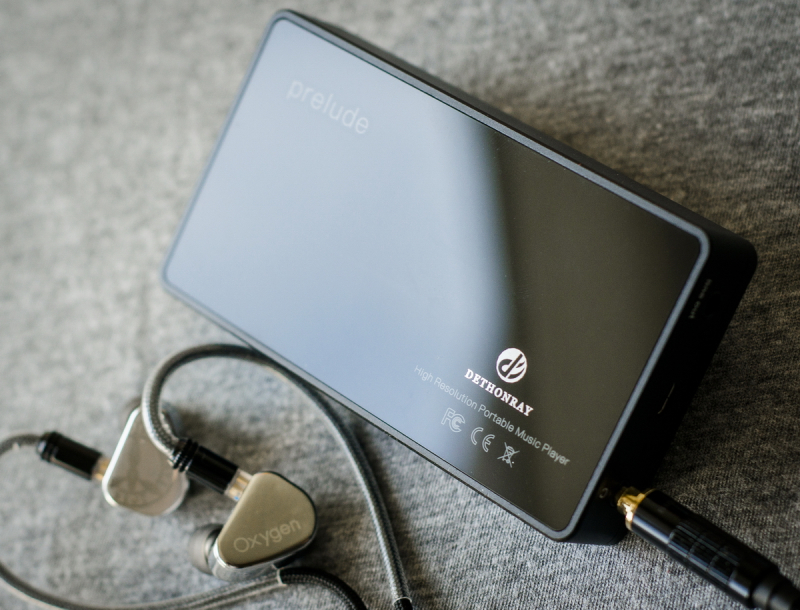
In the following 2 years Dethonray has presented HP-2 AMP, Honey H1 DAC/AMP, Listening T1 powerful tube desktop amp and has the roadmap for 2 more products: Prelude DTR1+ DAP and Tender 1 IEMs. The latter should become widely available this July whereas highly anticipated DTR1+ should arrive to shops on August. Therefore, we are right at the point of Tender 1 release and have our sample on hands. If to consider the amount of products released by the brand for the past 2 years – seems like not much…, but knowing the approach, attitude and will of the main person behind it to develop / produce only high-quality and remarkable products – it is logical that R&D, test and polishing take a lot of time. Currently, Dethonray would even pass their samples to focus testing group (not the reviewers) for quite a long time before the release to collect feedback, tune further and track all bugs. Product would come to the market only after that, even if the preliminary sales deadlines were violated. Almost forgotten and the only RIGHT “engineer” approach instead of “marketing is in command” that pisses us off with the iterations before the product gets really stable and our forced role in such bug-fixing groups.
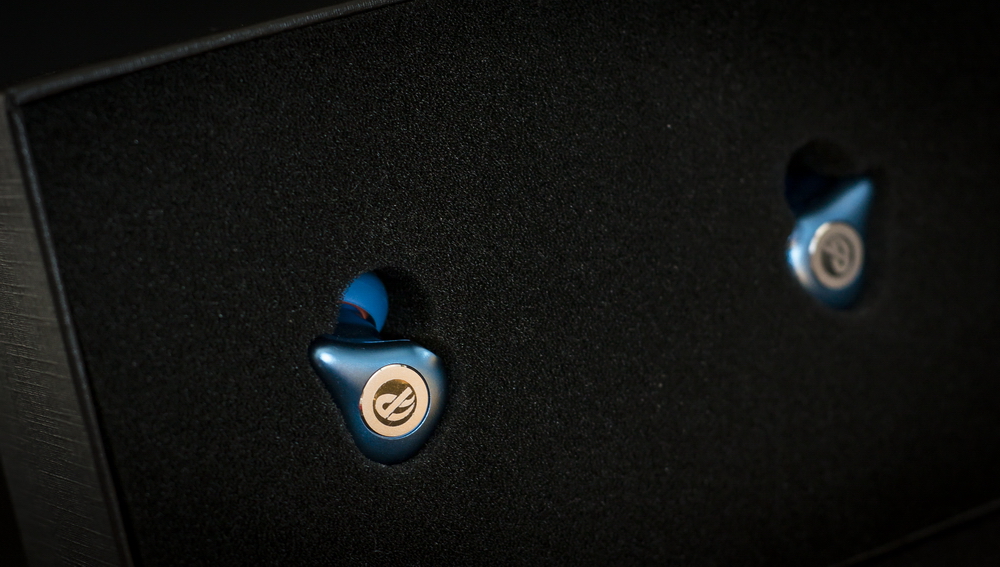
Dethonray Tender 1 are the first IEMs by this brand, thoroughly researched, built and tested. But not only the long process from cradle to the final release announcement is uncommon and peculiar, but also the technology that has been chosen. Instead of jumping into the bucket full of dynamic/hybrid/armature vultures Dethonray guys decided to jump over and take a higher crossbar the name of which is planar magnetic. For those who are in a tank for the past forty years 🙂 – planar magnetic (also referred as magneplanar, isodynamic, orthodynamic) technology is a golden middle between widely used, inexpensive and traditional dynamic approach in which diaphragm is controlled by a electricity flow through the coil attached to its center and a magnet and very expensive electrostatic technology in which coil and diaphragm are represented by thin membrane between negative and positive plates. In first case we get cheap, easy-to-reporoduce construction but the negatives are slow response and uneven force distribution over diaphragm, both leading to sufficient amount of distortions and resulting sound deviations. On the other extreme are the electrostatic drivers which are still very rare and expensive, require more space and not yet miniaturized. Planar magnetic, on its turn, takes the best from both worlds: cheaper magnets and coil principle from dynamic driver but much more complicated and advanced membrane composition.
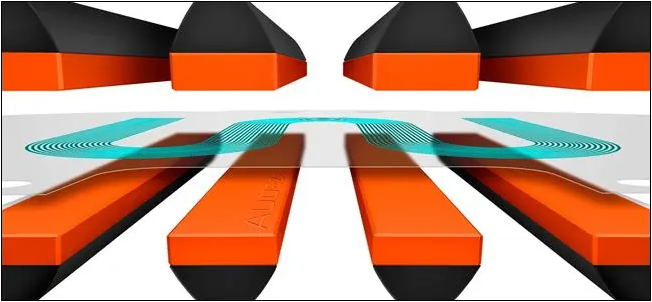
Coil now is combined with a diaphragm, placed between the magnets and the entire diaphragm surface is moving to produce sound waves. What are the advantages over dynamic technology? – very fast response times, transient sound is almost non-existent and resistance to distortions, all of which result into more even (less distorted or certain range-oriented) and much more precise (much better clarity, layering and instrument separation) sound. Again, IEMs of this type are quite rare and more expensive in comparison to dynamic/hybrid/BA units but after spending enough time testing Tender 1 we can assure you that it really worth it.
Dethonray Tender 1 specs:
- 10mm planar diaphragm
- Impedance: 28Ohm
- Sensitivity: 98 +/- 3dB
- FRange: 20Hz – 20kHz
- Rated power: 5mW
- Max power: 10mW
- Max distortion: 1dB
- Interface: MMCX
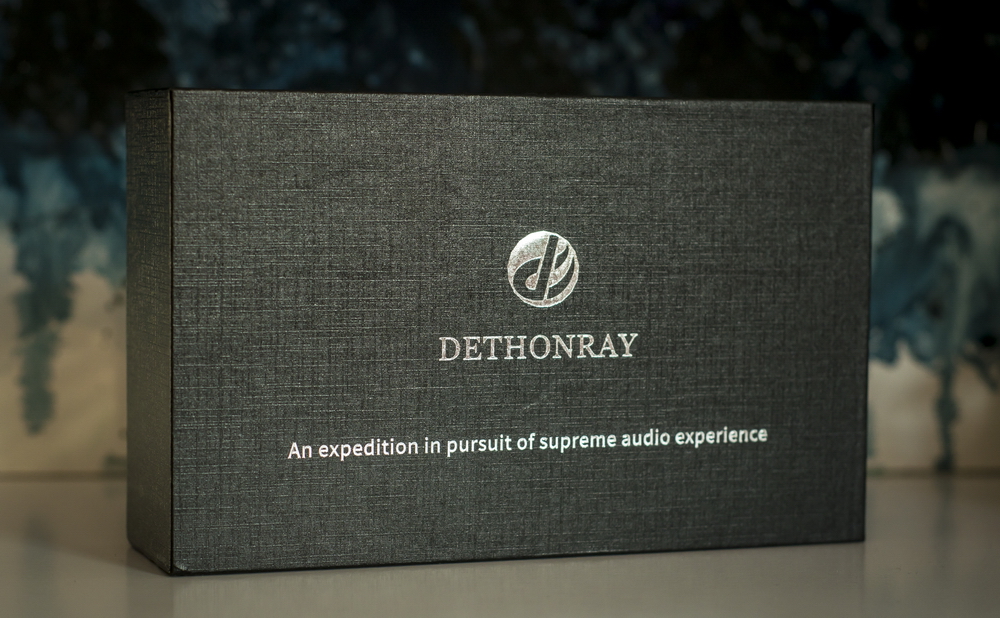
Packaging and design:
Dethonray Tender 1 came packed in pretty large black box with shiny silver logo and names printed on the top cover and sticker with product specs at the bottom. Inner compartment consists of two layers: soft podium with special cutouts for IEMs on top and all accessories resting underneath. Box contents include:
- Tender 1 IEMs
- audio cable with 3.5mm SE jack
- 6 pairs of silicone ear tips
- 1 pair of memory foam ear tips
- leaflet/warranty
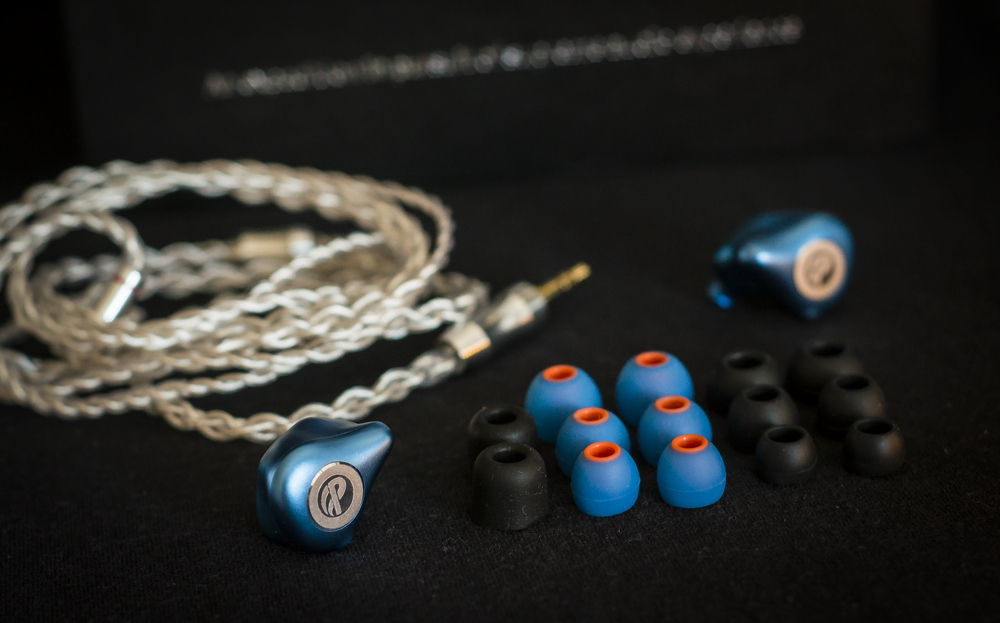
Considering the design – Tender 1 IEMs are a masterpiece with its combination of accurate detailing, ergonomic shaping, beauty of decorative elements and choice of shell color. We can say that that the photos which we’ve taken only partially resemble the glory of its real appearance.
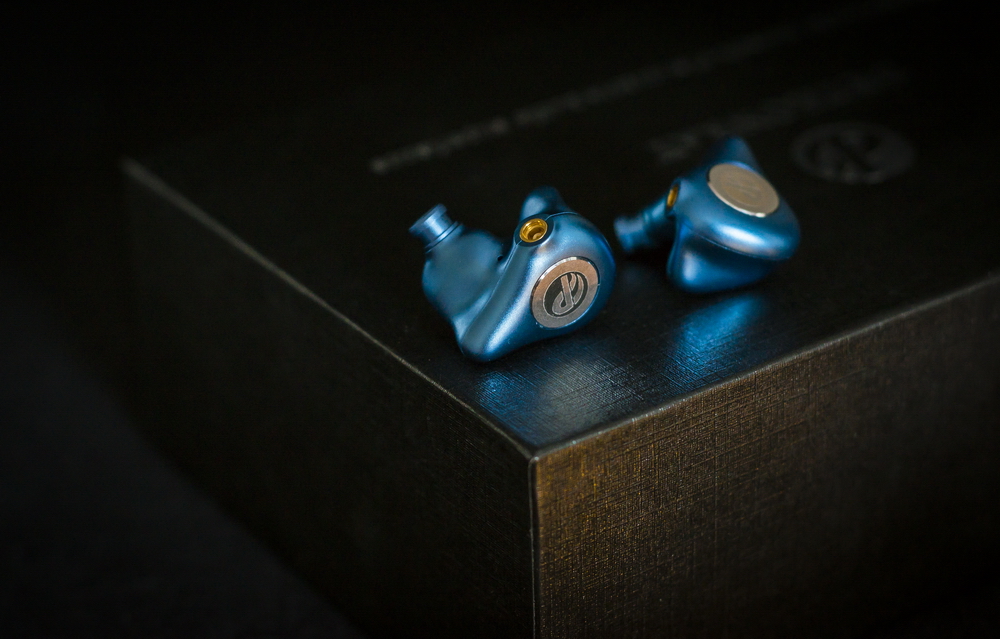
Core design element is the silver plate with the logo, partially polished to shine and reflect the light, perfectly combined with the rough matt shell surface in deep cyan or blue depending of the angle of view.
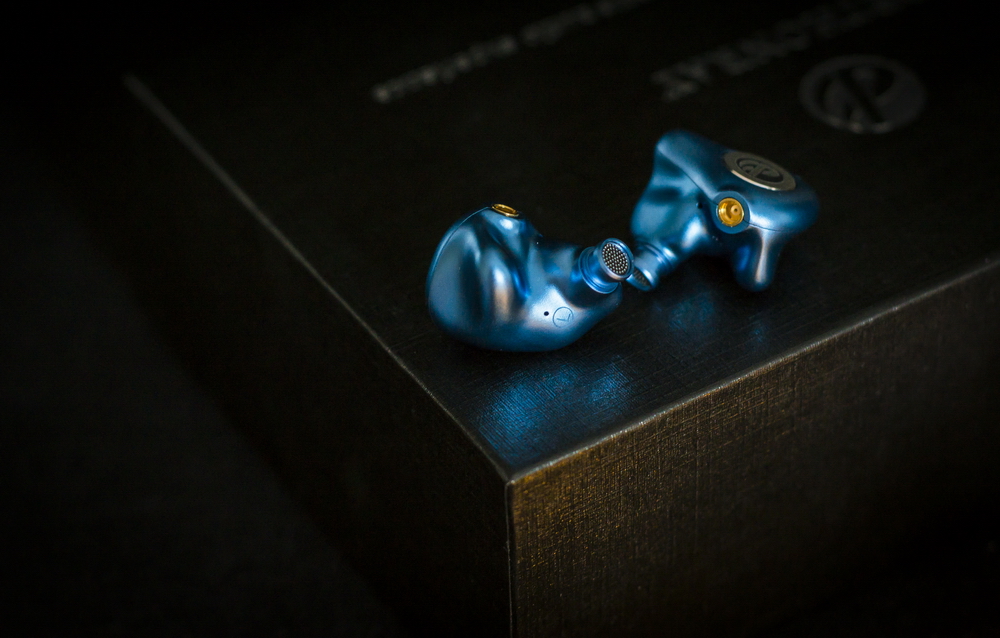
Shells are made two piece of aluminum with unibody construction of output nozzles which are covered by aluminum filters. Two compensational openings per channel, side indicators and gold-plated MMCX ports – all a part of the construction, not only functional but also neatly crafted. For us, the choice of MMCX connectors is the only minor drawback of Tender 1 IEMs. Such connectors are easier to break in comparison to “2pin” type, especially in case of often cable change. On the other hand, MMCX turn around the center which means more freedom and comfort when it comes to its fit.
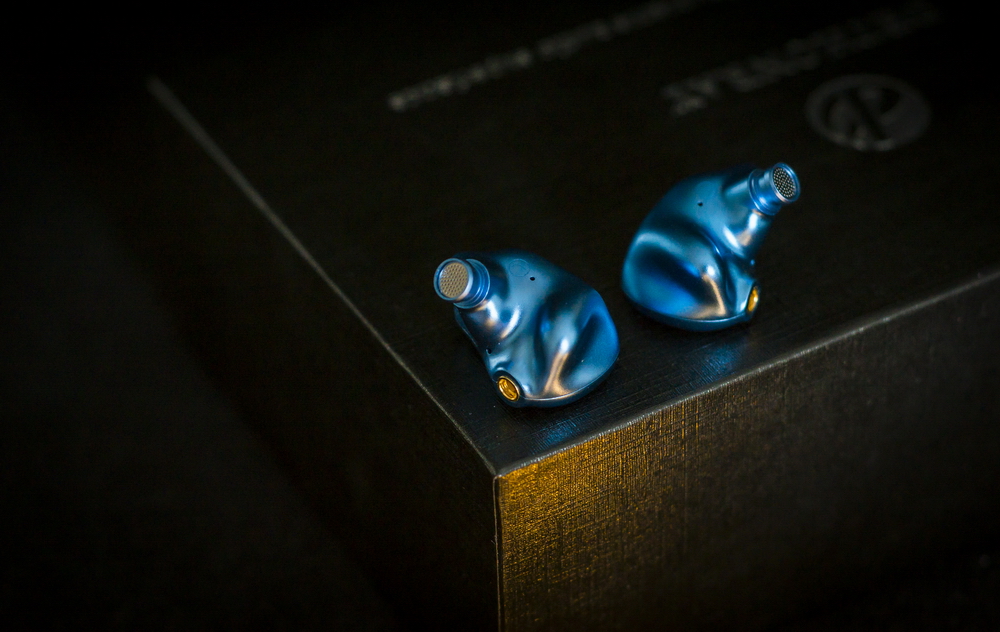
Fit is nothing to worry about, almost perfect, like with all other “custom-like” shaped IEMs. Ergonomics is great, different ear tips provided, fits comfortably and securely.
Stock cable deserve couple of words on its own:
- Material: 4N Solid Core Silver
- Cable Structure: Litz Type 4 with SZ Multi-Stranding
- Number of Cores: 35
- AWG (thickness): 27
- Cable Diameter: 1.3mm per cord
- Origin of Silver: China
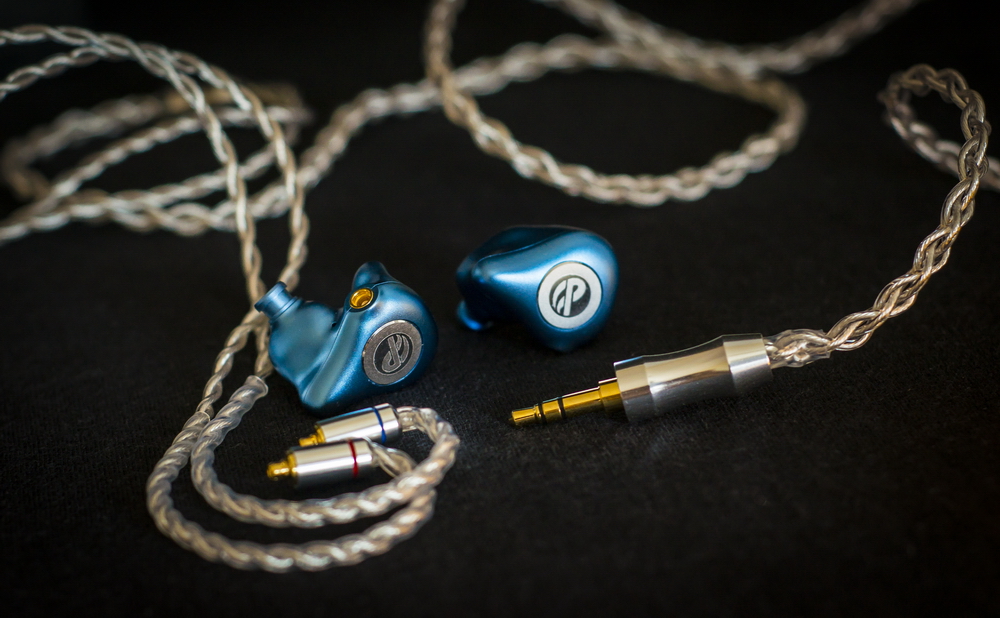
Pretty intriguing that all of this data is provided about such accessory as audio cable. Anyway, what we can say for sure is that this cable looks pretty thick, equipped with flexible ear guides, aluminum jack/connector housings and channel indicators. Perhaps, in future, Dethonray would consider also including 2.5/4.4mm BL-type cable or universal cable with interchangeable audio jack which is the most recent and interesting innovation in this field. In our test we’ve used stock SE and BL cable by Penon which was actually forced matter since some of our sources had enough driving potential only on BL outputs.

Just to summarize before we jump to sound impressions: Tender 1 are the most beautiful and one of the most perfectly crafted IEMs for us so far. We have almost 100 of different popular models by different brands and only few that have such a good combination of material, shape, design and fit.
Sound impressions:
In contrary to the common structure of our reviews, Tender 1 IEMs require some additional description of the source gear used and required to carry out adequate tests. First of all, the nature of planar magnetic technology is power-hungry and requires more driving potential from a source than any dynamic or BA units. Moreover, it is hungry for high quality of the recordings as well and we would explain this a bit later. Concerning the sufficient amount of power, despite quite ordinary sensitivity/impedance figures, Tender 1 would be much better off with Hi-Res DAP & AMPs capable of AT LEAST 200mW@32Ohms on its output. The more power a source has, the better it discloses the potential of Tender 1 IEMs.
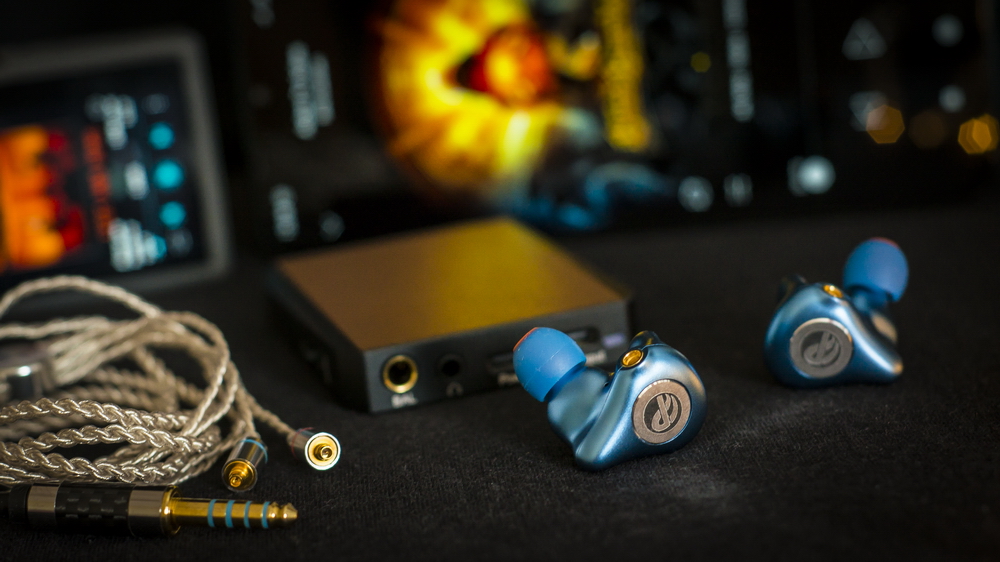
Second, whether you believe it or not, but in order to make Tender 1 sound the best it is very important to put it through running-in process for at least 10 hours. Just leave it playing on mid volume for this amount of time before the first use. We were skeptical about such approach before but Tender 1 really sounds better (wider and softer) after running-in period.
Finally, our testing gear was: Hidizs AP80 DAP + xDuoo XD05 Plus DAC/AMP (1W of power output, very large soundstage) / Hidizs DH80 DAC/AMP (210mW of power, neutral, requires GAIN set to MID/HIGH). Why this gear – simply because Hidizs DAPs and AMPs are popular and xDuoo AMP is the most capable of Tender 1 requirements.
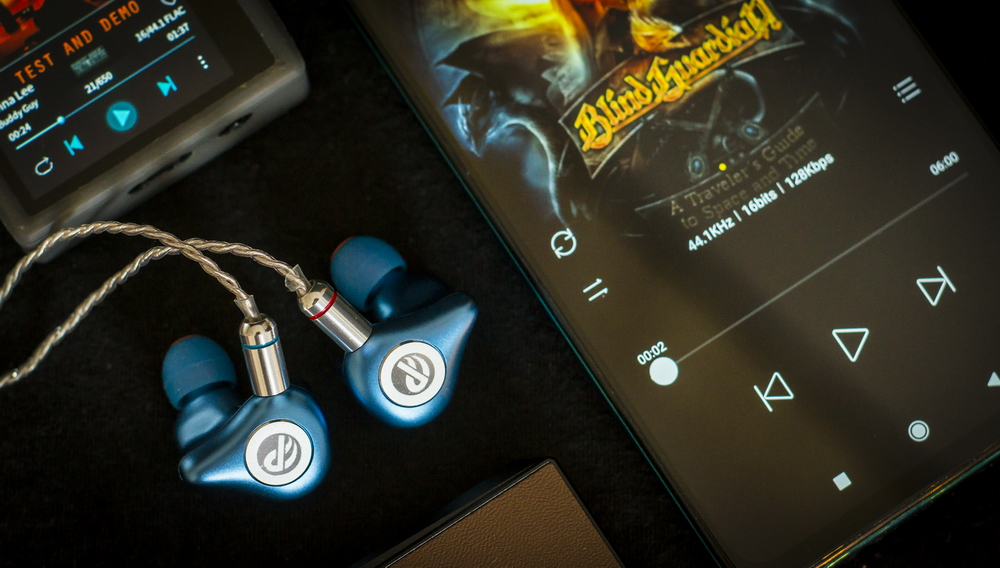
Theory and the description of this technology states that planar magnetic drivers are less capable of deep bass than dynamic units. It might be true, but not for Tender 1 IEMs. Seems that Dethonray spent much time on this aspect to oppose such claim. The only thing that might remind of the technology chosen is susceptibility to clipping/producing distortions on lows earlier than on mids/treble at higher gain + high volume. Staying in acceptable volume levels would produce deep, very detailed, perfectly outlined bass with excellent separation and exposure. It turns tight and fast or rolling, slow and deep depending of the composition, not limited by the technology. Mid bass is similarly decent – fast, dynamic, powerful and tight, bright or warm as originally intended, but definitely not selfishly interpreted. Furthermore, such a good bass exposure and amount significantly enlarge the width of the soundstage, adding the feel of sufficient volume and space.
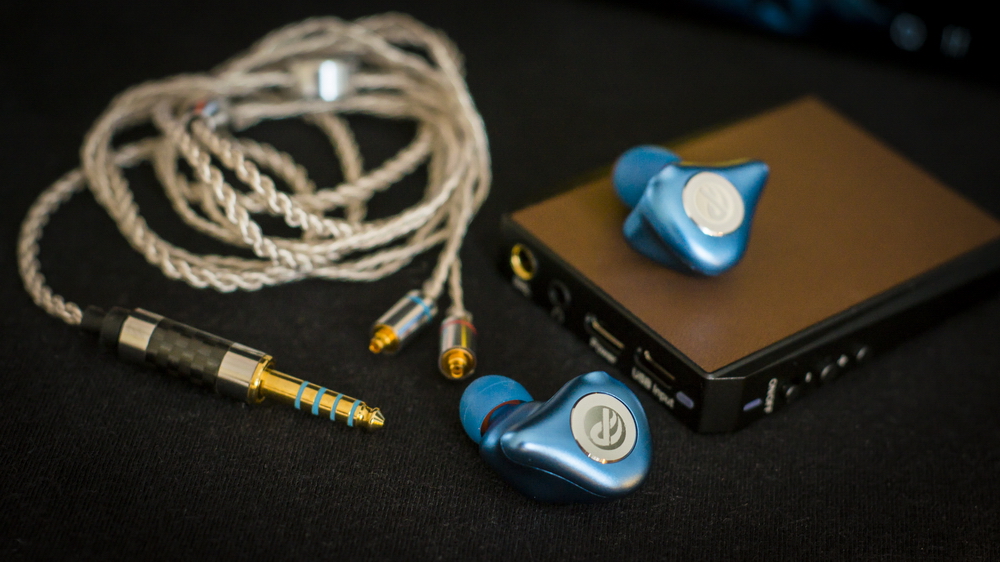
Mids are very smooth, delicate and warm, yet very detailed and natural. No signs of screaming or lisping on the upper portions, no sudden harsh peaks on female vocals of string instruments. Layering and separation here are excellent – everything is right on its place, not mixing, not shadowed. Vocals are rich, full-bodied and emotional but the main virtue is that male and female vocals sound evenly detailed and exposed, located on the same plane, not like in V-shaped IEMs with severe accent on upper mids and loss of details on the lower end. Very natural, tender, velvet and linear delivery.
Despite the prevailing warmth, treble is nowhere near of being deficient. Just imagine IEMs with the sweet elevation on lows, natural mids and reasonably vivid treble that reminds of BA performance and you would get the understanding about what Tender 1 are capable of. Treble is sparkling, with excellent extension and huge amount of details. Like with good BA units, you won’t feel that it’s being abruptly cut off like it happens with many dynamic IEMs. Plus, adding a bit of more body to each sound makes Tender 1 treble less cold and artificial, but at the same time more sterling and natural.
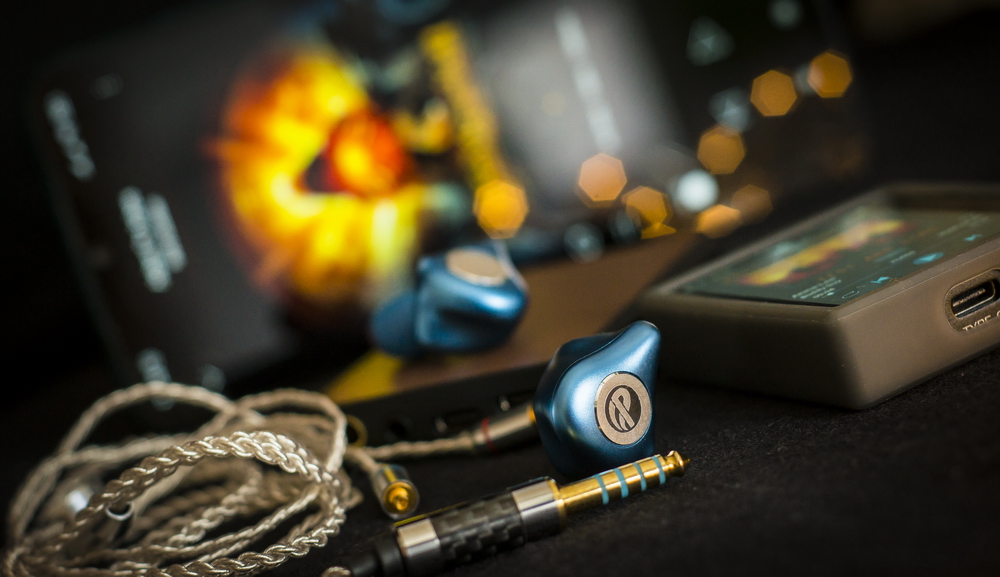
Narrowed soundstage could have been a postulate if Dethonray wouldn’t overcome this technology shortcoming by all possible means. As we have already mentioned, thorough tuning on lows, perfect layering and instrument separation dedicate much to make the stage moderately large. As a result, Tender 1 feels quite regular, neither revealing nor disappointing regarding this aspect. Furthermore, with specific sources like XDuoo XD05Plus that builds very large soundstage, Tender 1 definitely opens up and shifts the limits for planar magnetic technology.
Our additional notice would be about the track quality. Since this technology is far more revealing in terms of the amount of details – the better quality is fed, the better the results are. Dethonray IEMs would easily expose all discrepancies and imperfections of low quality tracks.
Comparison: nothing to compare with. Dynamic IEMs are mixing sounds and ranges, less capable of treble, not this linear and natural in mids. BA IEMs are more piercing and artificial, cannot propose anything on lows. Hybrid are the closest, but still missing such delicate and smooth mids and natural, extended treble.
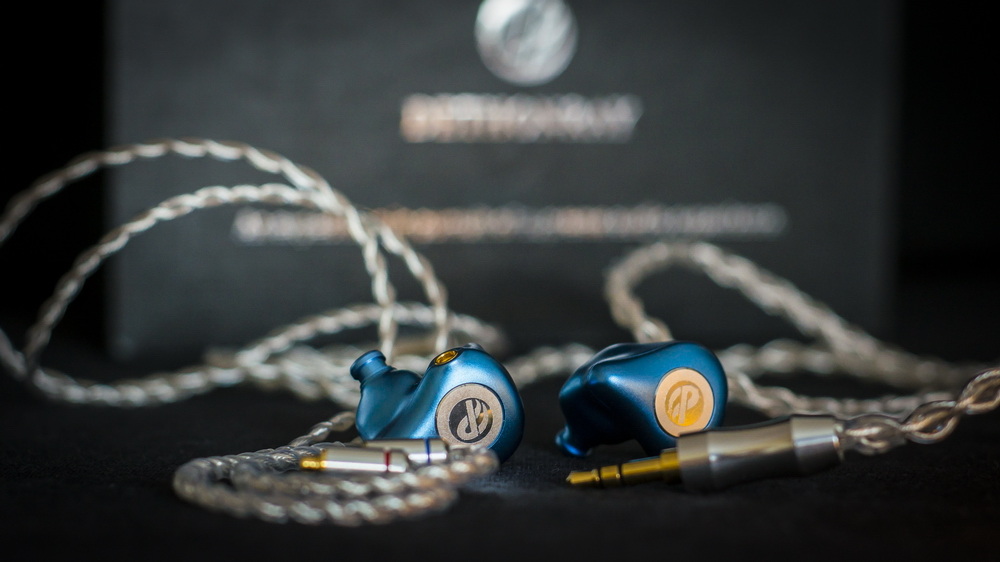
Conclusion:
It feels like the endgame for us. Almost hundred of IEMs, dynamic, armature or combined, with few very good representatives of each technology but all fell short of opposing anything to Tender 1 planar magnetic model. It might have been only the soundstage that could have given a head start to any of its rivals, but even this aspect was polished out by Dethonray. Absolutely nothing to beat Tender 1 with – it is totally different world with much higher stakes. And since there are only few existing options – Tender 1 IEMs are doomed to succeed. In numbers, it would directly depend of how many audio fans have grown up and became audiophiles with the mature taste and calm enjoyment. We are right at this point… Dethonray Tender 1 is the appropriate gear to satisfy our expectations and perception of a perfect sound.
Dethonray Tender 1 IEMs available on Amazon: LINK
Official Dethonray website: LINK

